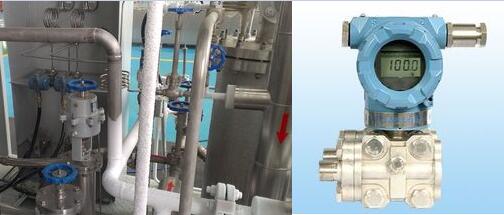The differential pressure transmitter is used to measure the liquid level, density and pressure of liquids, gases and vapors, and then convert it into a 4-20mADC current signal output, which can be displayed by a display instrument. A differential pressure transmitter for measuring differential pressure values, the differential pressure transmitter has a solid vibration, range, zero point, and damping field continuously adjustable. High precision and good stability. Differential pressure transmitters combine different sensor technologies with a compact aluminum or plastic housing for a wide range of liquid and gas measurements.

The differential pressure transmitter adopts full hard seal oil-filled isolation technology, unique dual-core design, reliable single-stage static pressure protection, and greatly enhanced the reverse overload level. Intelligent compensation technology, long-term performance stability, so it can be perfectly used in a wide range of precision measurement, including the flow of gas and liquid. Differential pressure transmitters are different from general pressure transmitters in that they have two pressure interfaces. The pressure transmitter is generally divided into a positive pressure terminal and a negative pressure terminal. Under normal circumstances, the pressure of the positive pressure end of the differential pressure transmitter should be greater than the pressure of the negative pressure section to be measured.
Differential pressure transmitter installation requirements:
1. The installation position of the differential pressure transmitter on the process pipeline is related to the measured medium. In order to obtain a good installation effect, the following conditions should be considered:
Prevent the transmitter from coming into direct contact with corrosive or overheated test media;
Prevent dross from depositing and clogging in the pressure guiding tube;
The length of the pressure pipe on both sides of the positive and negative pressure should be the same as possible;
The liquid column indenter in the pressure pipe on both sides of the positive and negative pressure should be balanced;
The impulse line is installed where the temperature gradient and temperature fluctuations are minimal.
2. When measuring the liquid flow rate, the differential pressure transmitter should be installed beside or below the pipe to be tested so that the bubbles are discharged into the pipe;
3. When measuring the gas flow rate, the differential pressure transmitter should be installed beside or above the pipe to be tested so that the accumulated liquid can easily flow into the pipe;
4. When measuring the steam flow, the differential pressure transmitter should be installed under the pipe to be tested so that the condensate can be filled in the pressure pipe.
Special care should be taken to prevent the temperature of the differential pressure transmitter from contacting the medium above the limit temperature used by the transmitter when measuring steam or other high temperature media.
Note for differential pressure transmitters:
(1) When designing and installing, the pressure tapping hole at the bottom of the tank should be considered as low as possible to eliminate the error caused by temperature change, and temperature compensation should be introduced if necessary.
(2) In the case where the horizontal section of the tank of the tank is not equal (as small as above), compensation measures should be considered. For example, the secondary meter uses the WP-H80 series liquid level-capacity controller.
(3) In order to achieve a certain precision, if a breathing valve is installed at the top of the tank, a differential pressure transmitter must be used instead of a pressure transmitter. When the open tank or precision requirements are not high, the pressure transmitter can be used directly to facilitate installation.
(4) The secondary meter should use the smart meter as much as possible, which can easily change the range and realize temperature compensation.
Differential pressure transmitters are gas or liquid pressure units are Pascal; pressure transmitters generally also refer to gas liquid pressure, but there are also pressure sensors called pressure sensors. The differential pressure transmitter measures the difference in pressure between two (inside the container) gas or liquid as a relative amount.
The differential pressure transmitter is a field instrument used to detect the flow, differential pressure, pressure, liquid level, density and other parameters of the fluid during the operation of the production process. Because it is in direct contact with the measured medium, it is often at high temperature, low temperature and corrosion. Operating in harsh environments such as vibration, shock, and radiation. And due to the large-scale, complicated process and the application of computer distributed control. Therefore, there are high requirements on the accuracy, long-term stability and reliability of the transmitter.
Zhuzhou Jingfeng Carbide Tools Co., Ltd , https://www.zzjfcarbide.com
